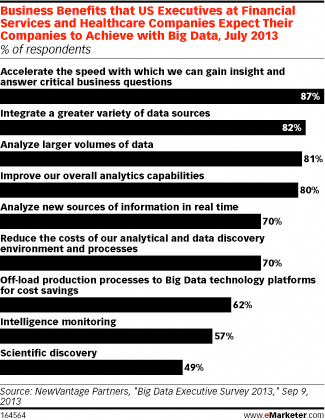Key Trends for 2014: New Demands Accelerate Marketing
December 11, 2013
![]() The rapid emergence of the everywhere, always-connected consumer places new demands on marketers, according to a new eMarketer report, “Key Digital Trends for 2014.” Specifically, it raises expectations about the speed with which marketers need to respond to expressions of interest across the customer journey, from the consideration phase all the way through to post-sales service. Gone are the days of 24- or 48-hour response times. Consumers expect instant interactions, whether it is a relevant offer or an answer to a customer service query, and the ability for same-day delivery of items purchased through digital channels.
The rapid emergence of the everywhere, always-connected consumer places new demands on marketers, according to a new eMarketer report, “Key Digital Trends for 2014.” Specifically, it raises expectations about the speed with which marketers need to respond to expressions of interest across the customer journey, from the consideration phase all the way through to post-sales service. Gone are the days of 24- or 48-hour response times. Consumers expect instant interactions, whether it is a relevant offer or an answer to a customer service query, and the ability for same-day delivery of items purchased through digital channels.
 elivering on consumer expectations of immediacy requires a combination of several factors. Automation will be one piece of greater marketer responsiveness, especially on the advertising side. Ads can help marketers establish a presence with consumers across the purchase cycle, wherever they may be and whatever they may be doing.
elivering on consumer expectations of immediacy requires a combination of several factors. Automation will be one piece of greater marketer responsiveness, especially on the advertising side. Ads can help marketers establish a presence with consumers across the purchase cycle, wherever they may be and whatever they may be doing.
 But automated purchasing of display ads—whether served on websites or appearing in a smart device app—is just one piece of the puzzle. A related need is ensuring those ads show up in the right place and on the right device. A key task for marketers involves recalibrating their efforts in line with the device-shifting behavior of their audiences.
But automated purchasing of display ads—whether served on websites or appearing in a smart device app—is just one piece of the puzzle. A related need is ensuring those ads show up in the right place and on the right device. A key task for marketers involves recalibrating their efforts in line with the device-shifting behavior of their audiences.
And marketers expect that smarter applications of data will help them respond faster—and better—to business challenges. For example, in a July 2013 survey by NewVantage Partners and the Direct Marketing Association (DMA), 87% of US financial services and healthcare executives cited the acceleration of their ability to gain insights and answer questions as a byproduct of working effectively with Big Data.
Marketers anticipate that greater immediacy will yield a host of benefits not limited to gains in efficiency and transparency. They likewise expect to see benefits in marketing effectiveness in terms of more precise targeting. But when it comes to real-time efforts in particular, marketers hope to drive increases in engagement with their often-elusive audience.
One result is that integration between digital and traditional channels is increasing. According to brand marketers surveyed worldwide by marketing firms Econsultancy and Responsys in May 2013, websites, email and paid search were the most tightly integrated digital marketing channels. SEO, display ads and social media marketing efforts followed closely behind. A corollary is that marketing campaigns overall are becoming more interdependent across channels. This, too, should pay dividends in terms of greater responsiveness to time-, place- and device-shifting consumers.
Courtesy of eMarketer






























